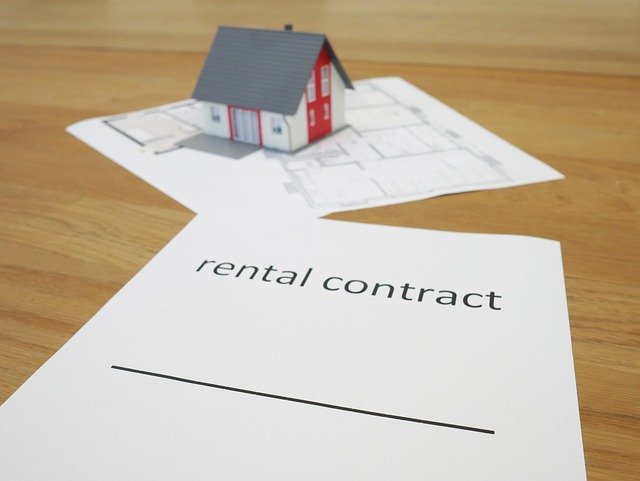Understanding Rent to Own Housing: A Comprehensive Guide
Rent to own housing offers a unique pathway to homeownership for those who might not qualify for traditional mortgages immediately. This alternative arrangement allows potential buyers to rent a property with the option to purchase it later, providing time to build credit, save for a down payment, and test-drive a home before committing to buy it.

Rent to own housing represents an alternative path to homeownership that bridges the gap between renting and buying. For many Americans facing credit challenges or lacking sufficient down payment funds, this option provides a structured approach to eventually owning the home they live in. The arrangement typically involves a standard rental period followed by an opportunity to purchase the property, with specific terms outlined in a detailed agreement between the tenant-buyer and the property owner.
What Is Rent to Own Housing?
Rent to own housing (also called lease-to-own or lease-purchase) is an agreement that allows you to rent a home for a specific period with the option or obligation to buy it before the lease expires. This arrangement consists of two key components: a standard rental agreement and either an option to purchase or a purchase agreement.
The rental component works much like a traditional lease, requiring monthly payments for the duration specified in the contract. The purchase component, however, is what makes rent to own unique. It establishes the terms under which you can buy the property, including the future purchase price, which is typically agreed upon at the beginning of the contract.
Rent to own agreements come in two main forms: lease-option and lease-purchase. With a lease-option, you have the choice to buy the home when the lease ends but aren’t obligated to do so. A lease-purchase agreement, however, legally binds you to purchase the property at the end of the term.
How Rent to Own Works
The rent to own process typically begins with the signing of a contract that outlines all terms and conditions. Most agreements last between one and five years, giving the tenant-buyer time to prepare financially for the eventual purchase.
When entering a rent to own agreement, you’ll typically pay an option fee (or option consideration), which is a non-refundable upfront payment that grants you the exclusive right to purchase the property later. This fee usually ranges from 1% to 5% of the home’s purchase price and may be credited toward the purchase if you decide to buy.
During the rental period, a portion of your monthly payment may be designated as a rent credit (or rent premium), which accumulates over time and can be applied toward your down payment or closing costs if you exercise your option to buy. This arrangement helps you build equity while still renting.
Throughout the lease term, the tenant-buyer is often responsible for maintenance, repairs, and sometimes property taxes and insurance—responsibilities typically handled by landlords in traditional rental situations. This arrangement gives you a taste of homeownership before fully committing.
Rent to Own vs Regular Rent
Traditional rental agreements focus solely on occupancy rights for a specified period, with no pathway to ownership. The landlord maintains full ownership and responsibility for the property, while tenants have limited obligations beyond paying rent and avoiding damage.
In contrast, rent to own agreements include both rental and potential purchase components. Your monthly payments are typically higher than standard rent because a portion goes toward your future home purchase. Additionally, you’ll likely take on more property maintenance responsibilities than a typical renter would.
The financial implications differ significantly between the two arrangements. In a standard rental, your monthly payments build no equity and offer no tax benefits. With rent to own, part of your payment potentially builds equity in a property you may eventually own, and once you purchase, you gain access to homeownership tax advantages.
Risk allocation also varies considerably. Traditional renters face minimal financial risk beyond their security deposit. Rent to own participants, however, risk losing their option fee and rent credits if they ultimately decide not to purchase or cannot qualify for financing when the option period ends.
Rent to Own Costs and Terms
The financial structure of rent to own agreements includes several components beyond standard rent. The option fee typically ranges from 1-5% of the home’s purchase price. Monthly payments usually exceed market-rate rent because they include both the rental amount and the rent premium that accumulates toward your purchase.
Contract terms require careful scrutiny. The purchase price may be set at the current market value or include a predetermined escalation based on estimated appreciation. The agreement should clearly state what happens to rent credits if you don’t purchase and outline responsibilities for property taxes, insurance, HOA fees, and maintenance during the rental period.
Financing considerations are crucial, as you’ll eventually need to secure a mortgage to complete the purchase. The agreement should specify the timeframe for obtaining financing and any consequences if you fail to qualify. Many successful rent to own buyers use the lease period to improve their credit scores, increase their savings, and strengthen their overall financial position.
| Cost Component | Typical Range | Notes |
|---|---|---|
| Option Fee | 1-5% of purchase price | Usually non-refundable |
| Monthly Rent | Market rate + premium | Premium typically $100-500 above market rent |
| Rent Credit | 15-25% of monthly payment | Accumulates toward down payment |
| Maintenance Costs | Variable | Often tenant responsibility |
| Purchase Price | Current value or predetermined future price | May include appreciation formula |
Prices, rates, or cost estimates mentioned in this article are based on the latest available information but may change over time. Independent research is advised before making financial decisions.
Contractual protections are essential for both parties. For buyers, these include clear terms about what happens to accumulated rent credits, home inspection provisions, and financing contingencies. For sellers, protections typically include clauses addressing property damage, missed payments, and the buyer’s failure to exercise the purchase option.
Where to Find Rent to Own Homes
Specialized rent to own platforms and websites connect property owners with potential tenant-buyers. These platforms often provide educational resources and may offer some level of transaction support or standardized contracts. Examples include HomePartners, Divvy Homes, and Dream America.
Real estate agents with experience in rent to own transactions can be valuable resources. They understand local markets, can help negotiate favorable terms, and may have access to properties not publicly advertised as rent to own. Working with an agent who specializes in alternative financing arrangements is particularly beneficial.
Some property management companies have developed rent to own programs for select properties in their portfolios. These programs often provide more structured pathways and may offer additional support services to help tenants successfully transition to ownership.
Direct negotiations with motivated sellers present another opportunity. Homeowners struggling to sell in slow markets or those facing financial challenges may consider rent to own arrangements as alternatives to traditional sales. Approaching sellers directly requires confidence in negotiating and a clear understanding of fair contract terms.
When searching for rent to own opportunities, due diligence is essential. Research the property’s value, condition, and title status. Investigate the seller’s financial standing to ensure they’re not at risk of foreclosure. Always have an attorney review the contract before signing, as rent to own agreements lack the standardization of conventional real estate transactions.




